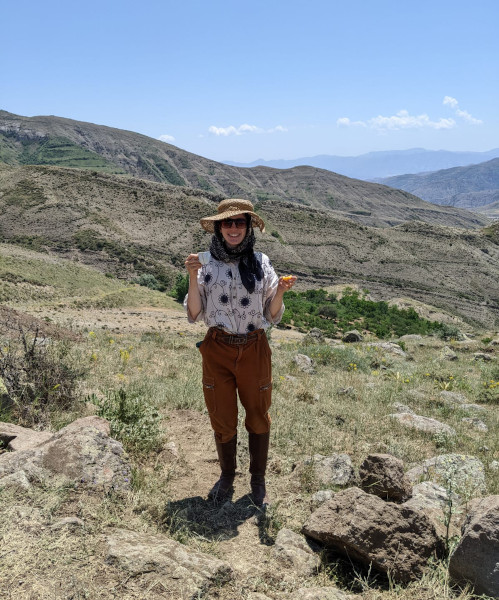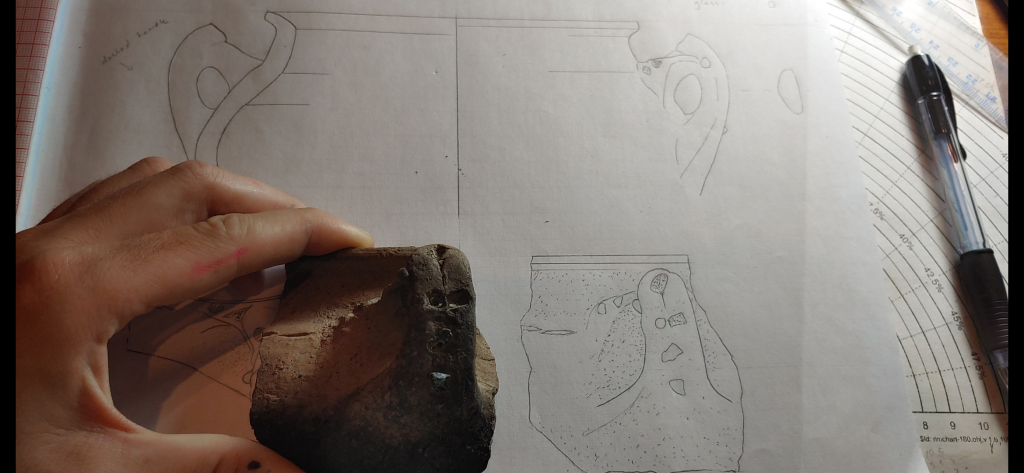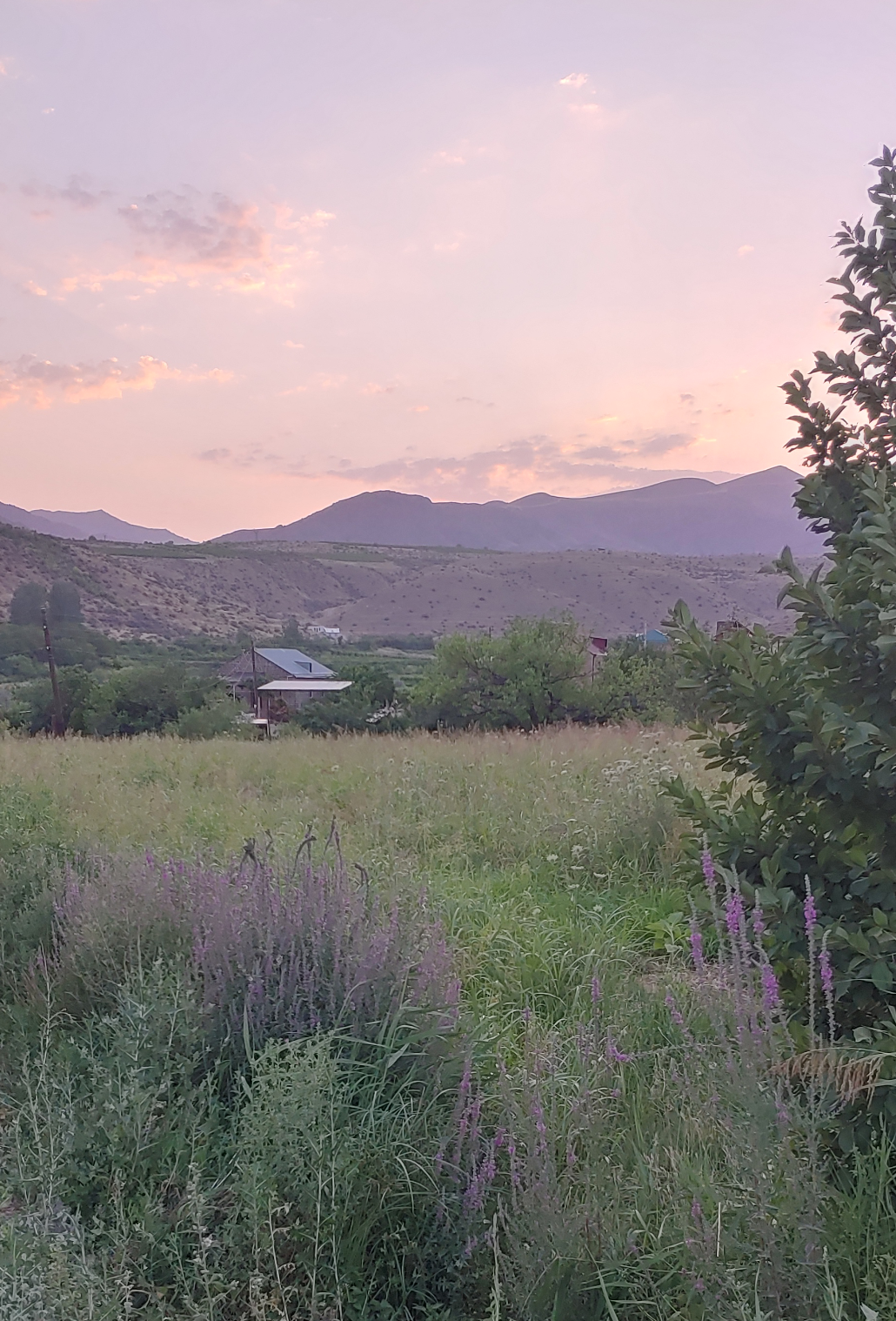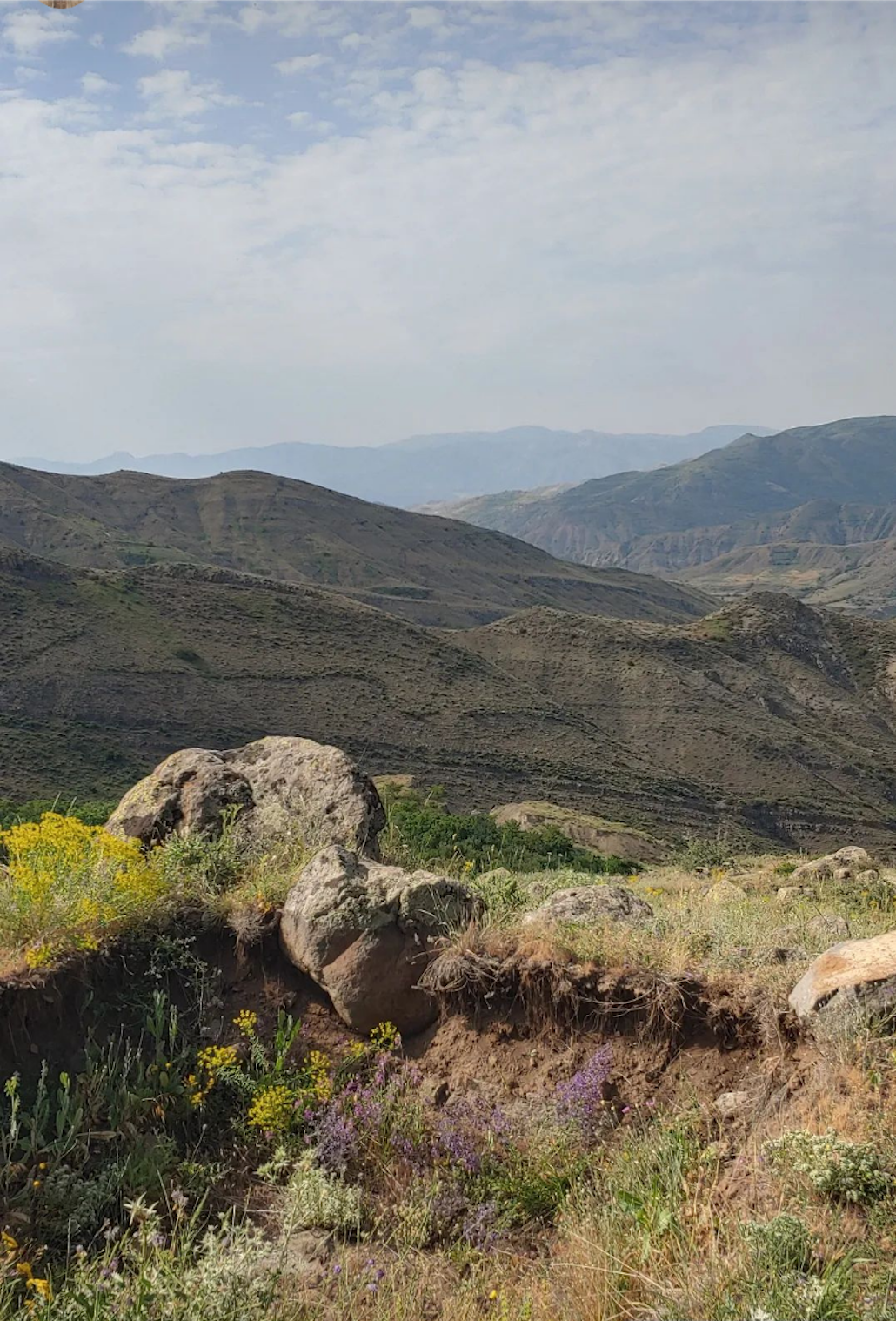
A Typical Day with the Vayots Dzor Fortress Landscapes Project
Thanks to the support of the Strange-Midkiff Scholarship for Fieldwork Participation, I was able to travel to Vayots Dzor, Armenia, in July of 2022 to participate in archaeological fieldwork. I joined the Vayots Dzor Fortress Landscapes Project, directed by Dr. Tiffany Earley-Spadoni, Dr. Arthur Petrosyan, and Dr. Boris Gasparyan.
The Vayots Dzor Fortress Landscapes Project is a multi-period project consisting both of survey and excavation, with concentrations of material from the Late Bronze/Early Iron Age as well as the medieval period.
This was my first field season in Armenia. For four weeks in July, I lived in the town of Areni while surveying and excavating. I greatly enjoyed working on a multi-period excavation, since my own focus is the late medieval period. It was interesting to collaborate with students focusing on other time periods and to discover more about the landscape from a diachronic perspective.
So, what does a typical day with the Vayots Dzor Fortress Landscapes Project look like?
In the morning, we would wake up and have a filling breakfast prepared by our host. This started with lavash (soft flatbread), cheese, and fresh herbs such as basil and chives, which were combined together into a rolled sandwich. This staple of Armenian cuisine was accompanied by eggs, tea, and honey.
Next, we would split into two teams: one for the excavation, and one for survey. I was usually excavating, although on some days, I stayed at the dig house to illustrate finds, and on other days, I joined the survey team. The drive to the excavation featured beautiful glimpses of the Armenian countryside and a winding final stretch up into the hills. At the end of the drive, we unloaded the van and carried picks, buckets, trowels, and other tools up to the trench.
Once we got to the site, my role was to record sketches of the trench and daily summaries on the record-keeping sheets, and to excavate with pick and trowel. The area we were excavating had already been excavated in a previous season; our goal was to expand the pre-existing trench and to reach bedrock, thereby documenting all layers of habitation of the site.
We ate lunch in the field and ended fieldwork in the mid-afternoon. After returning to the dig house and having our daily break, lab work commenced. My lab job was to illustrate the artifacts, mostly ceramics. I illustrated new ceramic finds by pencil, and digitally inked scans of penciled drawings from a previous season. I also had the opportunity to teach other students how to illustrate archaeological artifacts.
One question I am often asked is, why illustrate artifacts at all, when photography is faster? One answer is that illustration makes it possible to show objects in section. If one were to slice a vessel from top to bottom, the section is what the slice would look like. The section makes it easier to compare vessels from multiple sites and publications to see whether they are similar. Trying to record a vessel’s section with a photograph would result in a distorted image, and it would require damaging the vessel.
Illustration also makes it possible to re-create what a complete, or nearly complete, vessel would look like from only a few sherds. If one were to simply photograph a sherd, it would not reveal much about what the vessel looked like as a whole.
Meanwhile, photography has complementary uses: it can show the colors of glazes and surface decorations, and close-up photographs are able to show the composition of the clay. Together, photography and illustration create a balanced visual record of an archaeological artifact.
Towards the end of the season, we took final photos of the trench in the early-morning light, and I drew a top-plan of the trench. Drawing the top plan required about five hours of carefully measuring and sketching, because every rock and other feature of the trench needed to be plotted accurately in relation to the rest of the trench.
After wrapping up fieldwork, we carefully packed the artifacts for storage, transported them to the storage facility, and left for the capital city of Yerevan. Although this was my first summer in Armenia, I certainly hope it will not be my last.
Sofia Kane is a master’s student at the University of Crete in Rethymno, Crete in the Department of History and Archaeology, supervised by Dr. Antonis Anastasopoulos. Her research interests include archaeological illustration, medieval through Ottoman material culture, and the Ottoman-European scientific and intellectual networks of the 16th century.
Read more about Vayots Dzor Fortress Landscapes Project here.
American Society of Overseas Research
The James F. Strange Center
209 Commerce Street
Alexandria, VA 22314
E-mail: info@asor.org
© 2023 ASOR
All rights reserved.
Images licensed under a Creative Commons Attribution-NonCommercial-ShareAlike 4.0 International License
COVID-19 Update: Please consider making payments or gifts on our secure Online Portal. Please e-mail info@asor.org if you have questions or need help.




